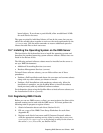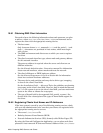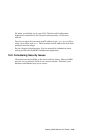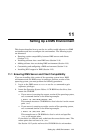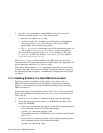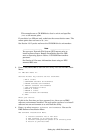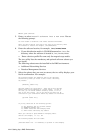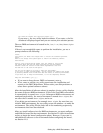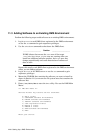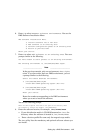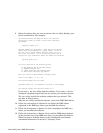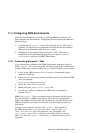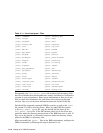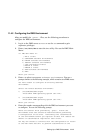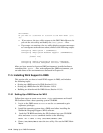.
.
.
Are these the subsets that should be loaded (y/n) ?
If you enter y, the dmu utility loads the subsets. If you enter n, the list
of subsets is displayed again and you can restart your selection process.
The new DMS environment is located in the /usr/v ar/dms/dmsN.alpha
directory.
If there is not enough disk space to perform the installation, you see a
prompt similar to the following:
fitset:
file system /usr needs 74683 Kbytes more to install the software specified.
setld:
There is not enough file system space to install the mandatory subsets.
setld failed.
Error(s) have occurred during subset load. The subset(s) that failed
are listed above and have not been installed into the environment.
Possible causes for failure include subset dependencies that have
not been met or the lack of disk space.
You will now be asked if you wish to keep this environment.
If you elect to keep the environment, you may install the subsets that failed
by choosing INSTALL from the DMS main menu and select an existing environment.
If you elect not to keep the environment, it will be completely removed.
Keep this environment (y/n) [y]:
• If you want to keep the new DMU environment, enter
y.
• If not, enter n, and the dmu utility terminates the installation and
returns to the DMU Main Menu. Either resize your disk partitions or
select fewer optional software subsets.
After the installation of software subsets is complete, the dmu utility displays
the name of the new DMS environment. If this is the first DMS environment,
it automatically is named dms0.alpha. Subsequent DMS environments are
numbered sequentially: the next environment is named dms1.alpha, the
one after that is named dms2.alpha, and so on.
If you delete an environment, for example dms4.alpha, the next time you
install a DMS environment, the dmu utility reuses the number 4 to name the
environment. The utility fills the holes left in the numbering sequence by
environments that have been deleted.
After you install software into the DMS environments, you must configure
and build the kernel for that environment. See Section 11.4.2 for instructions
on how to begin the kernel configuration phase. However, if you want to
add additional software to the environment before configuring the kernel,
see Section 11.3.
Setting Up a DMS Environment 11–5



